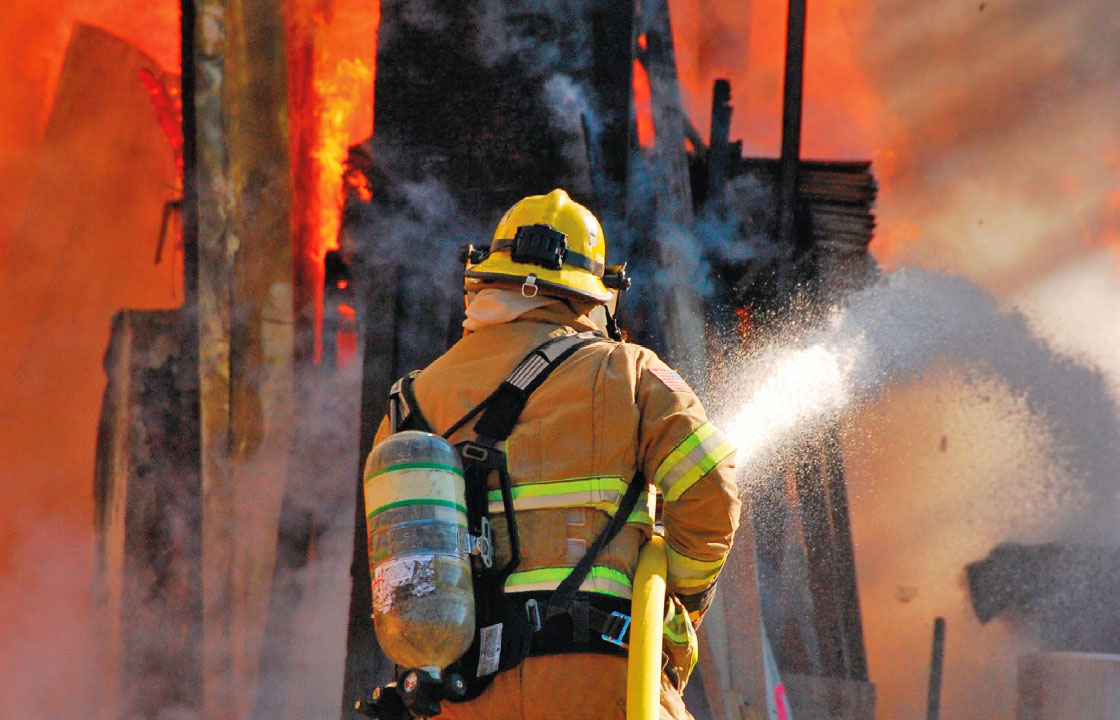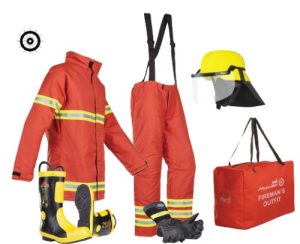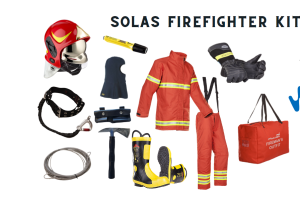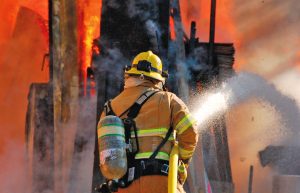Fireman’s outfits are a critical component of maritime safety, designed to protect crew members during firefighting operations onboard ships. Given the inherent risks associated with maritime environments, understanding the components, maintenance, and certification requirements of these outfits is essential for ensuring crew readiness in the event of a fire emergency. This article delves into the importance of fireman’s outfits, the specific gear included, maintenance practices, and regulatory compliance, providing a comprehensive overview for maritime professionals.
The Importance of Fireman’s Outfits
Fires onboard ships can escalate rapidly due to flammable materials and confined spaces. According to the International Maritime Organization (IMO), there were over 200 reported shipboard fires in recent years, highlighting the need for effective firefighting measures. Fireman’s outfits are designed to provide protection against heat, flames, and toxic smoke, enabling crew members to combat fires effectively while minimizing personal risk. These outfits are not just a regulatory requirement; they are a lifesaving necessity. The SOLAS (Safety of Life at Sea) Convention mandates that all ships carry fireman’s outfits to ensure that crews can respond promptly and safely to fire emergencies. By equipping themselves with the appropriate gear, seafarers can significantly enhance their chances of survival and successful fire suppression.
Components of Fireman’s Outfits
A complete fireman’s outfit typically includes several key components designed to provide comprehensive protection:
- Protective Clothing: Made from flame-resistant materials, these garments shield the wearer from heat and flames. The outer layer is often water-resistant to protect against steam burns.
- Self-Contained Breathing Apparatus (SCBA): This device provides breathable air in smoke-filled environments. According to SOLAS regulations, SCBAs must have a minimum air volume of 1200 litres and support at least 30 minutes of use.
- Fireman Helmet: Constructed from heat-resistant materials, helmets protect against impacts and thermal hazards. They often feature visors for eye protection against sparks and debris.
- Fire Boots: These are typically made from rubber or other non-conductive materials to prevent electric shock while providing thermal insulation.
- Fire Gloves: Designed to protect hands from heat and sharp objects, gloves are made from durable materials that resist flames and cuts.
- Electric Safety Lamp: A portable lamp is essential for visibility in smoke-filled environments. It should have a minimum burn time of three hours.
- Fire Axe: An insulated axe is included for breaking through barriers or clearing debris during firefighting operations.
- Fireproof Lifeline: This rope is used to secure firefighters in hazardous areas, preventing them from becoming disoriented or lost.
- Safety Belt: A belt is used for carrying auxiliary equipment such as axes and lamps.
Regulatory Compliance
Compliance with international regulations is crucial for the effective use of fireman’s outfits onboard ships. The SOLAS regulations outline specific requirements regarding the number and type of fireman’s outfits necessary based on vessel size:
- For vessels between 500-2500 tons: A minimum of two fireman’s outfits is required.
- For vessels between 2500-4000 tons: At least three outfits must be available.
- For vessels over 4000 tons: A minimum of four outfits is mandated.
- Tankers: Additional requirements specify at least two extra outfits due to the increased risk associated with carrying flammable cargoes.
The outfits must be stored in easily accessible locations such as the fire control room or designated lockers, ensuring rapid deployment during emergencies.
Maintenance of Fireman’s Outfits
Regular maintenance is essential to ensure that fireman’s outfits remain functional and effective in emergencies. Key maintenance practices include:
- Routine Inspections: Crew members should conduct regular inspections of all components of the fireman’s outfit to check for signs of wear or damage. This includes examining protective clothing for tears or burns, testing SCBA functionality, and ensuring that lamps have charged batteries.
- Cleaning Procedures: After each use, particularly in firefighting scenarios, outfits should be cleaned according to manufacturer guidelines to remove contaminants such as soot or chemicals that may compromise their integrity.
- Storage Conditions: Fireman’s outfits should be stored in a dry environment away from direct sunlight or extreme temperatures that could degrade materials over time.
- Certification Checks: All equipment should be regularly certified according to industry standards to ensure compliance with safety regulations. This includes checking SCBA air cylinders for proper pressure and functionality.
- Training Drills: Regular training drills should incorporate the use of fireman’s outfits to familiarize crew members with their gear under realistic conditions, enhancing their readiness during actual emergencies.
Case Studies Highlighting Effective Use
Several incidents underscore the importance of proper training and equipment maintenance regarding fireman’s outfits:
- MV Maersk Alabama Incident (2009): During a hijacking attempt off the coast of Somalia, a fire broke out onboard due to an electrical fault. The crew’s preparedness was evident as they quickly donned their fireman’s outfits and utilized their SCBAs effectively, managing to contain the blaze before it spread further.
- Ferry Fire in Greece (2014): A ferry experienced a significant engine room fire while en route to Italy. The crew’s training in using their fireman’s outfits allowed them to respond swiftly, utilizing their equipment efficiently to suppress flames until professional firefighters arrived on scene.
These cases illustrate that having well-maintained fireman’s outfits and trained personnel can drastically reduce damage during onboard fires while ensuring crew safety.
Fireman’s outfits are indispensable for maritime safety, providing essential protection against heat, flames, and toxic smoke during firefighting operations onboard ships. Understanding the components of these outfits—such as SCBAs, protective clothing, helmets, boots, gloves, lamps, axes, lifelines, and safety belts—is crucial for seafarers tasked with managing fire emergencies.Compliance with SOLAS regulations ensures that vessels are equipped appropriately based on their size and operational risks while regular maintenance guarantees that this vital gear remains functional when needed most. Through routine inspections, proper storage practices, cleaning procedures, certification checks, and ongoing training drills, crews can enhance their preparedness for potential fire incidents at sea.Ultimately, fostering a culture of safety awareness among maritime professionals will contribute significantly to reducing risks associated with onboard fires while safeguarding lives and property at sea. By prioritizing environmental health through effective firefighting measures using well-maintained fireman’s outfits, seafarers can ensure safer maritime operations for all involved.





I agree with this article.